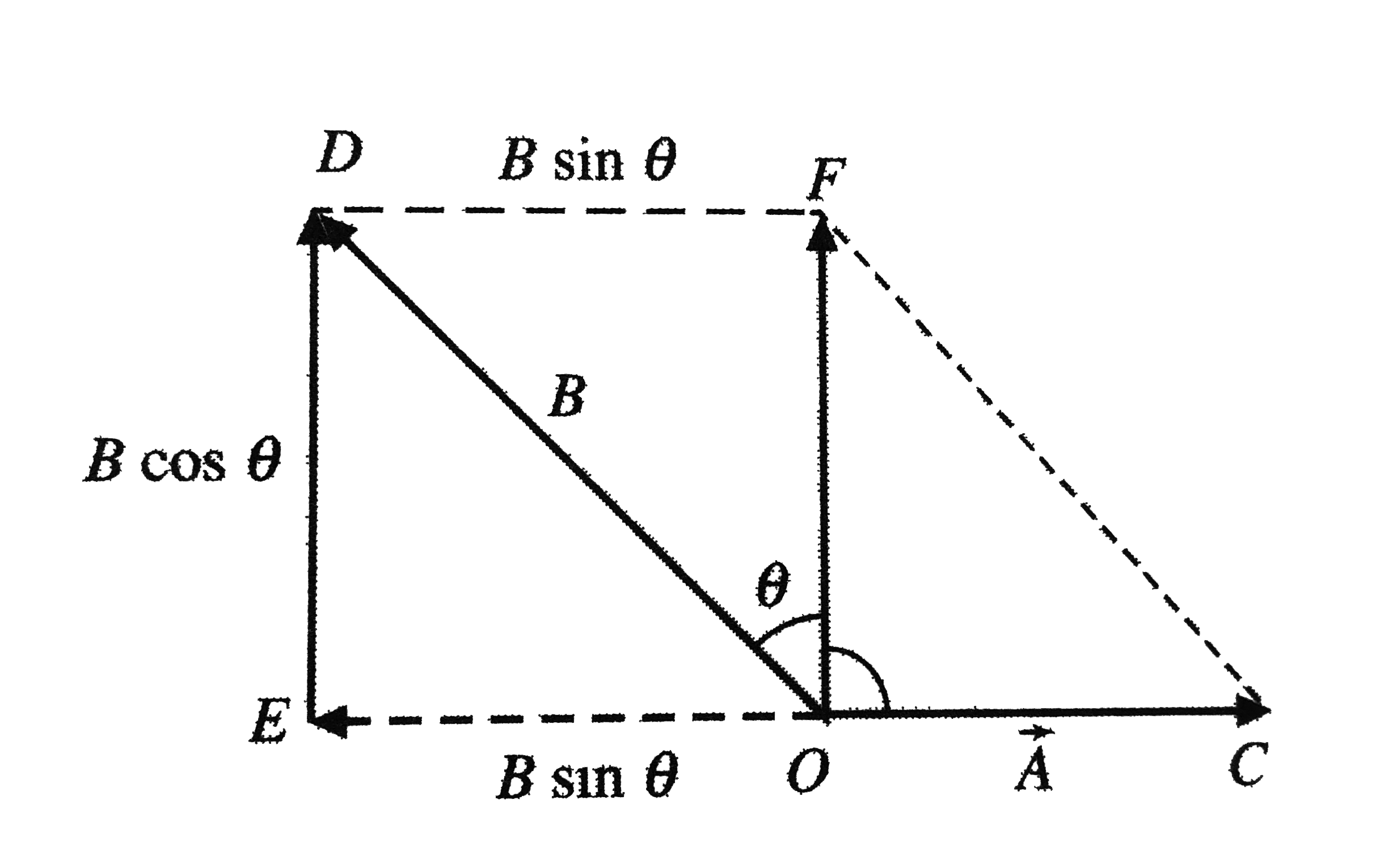If two vectors →Aand →Bmake angle 30∘and45∘ with their resultant and →B has magnitude equal to 10, then find magnitude of →A.
To solve the problem, we will use the information given about the angles made by the vectors with their resultant and the magnitude of vector B.
1. Understanding the Angles:
- Let vector A make an angle of 30∘ with the resultant vector R.
- Let vector B make an angle of 45∘ with the resultant vector R.
- The magnitude of vector B is given as B=10.
2. Using the Sine Rule in the Triangle of Vectors:
- According to the sine rule in the triangle formed by vectors A, B, and their resultant R:
Asin(45∘)=Bsin(30∘)
3. Substituting the Known Values:
- We know B=10, sin(30∘)=12, and sin(45∘)=1√2.
- Substitute these values into the equation:
A1√2=1012
4. Simplifying the Equation:
- The right side simplifies to:
1012=10×2=20
- Thus, we have:
A1√2=20
5. Finding the Magnitude of Vector A:
- Rearranging gives:
A=20×1√2=20×√22=10√2
6. Final Result:
- Therefore, the magnitude of vector A is:
A=10√2
Summary:
The magnitude of vector A is 10√2.
- Let vector A make an angle of 30∘ with the resultant vector R.
- Let vector B make an angle of 45∘ with the resultant vector R.
- The magnitude of vector B is given as B=10.
- According to the sine rule in the triangle formed by vectors A, B, and their resultant R:
Asin(45∘)=Bsin(30∘)
- We know B=10, sin(30∘)=12, and sin(45∘)=1√2.
- Substitute these values into the equation:
A1√2=1012
- The right side simplifies to:
1012=10×2=20
- Thus, we have:
A1√2=20
- Rearranging gives:
A=20×1√2=20×√22=10√2
- Therefore, the magnitude of vector A is:
A=10√2
The magnitude of vector A is 10√2.
Topper's Solved these Questions
- VECTOR & CALCULUSBook:MOTIONChapter:VECTOR & CALCULUSExercise:PHYSICAL EXAMPLE
Explore 11 Videos
- VECTOR & CALCULUSBook:MOTIONChapter:VECTOR & CALCULUSExercise:EXERCISE -1
Explore 76 Videos
- VECTOR Book:MOTIONChapter:VECTOR Exercise:Exercise - 3
Explore 18 Videos
- WAVE MOTION Book:MOTIONChapter:WAVE MOTION Exercise:Exercise - 3 Section - B (Previous Years Problems)
Explore 7 Videos
Similar Questions
If →Aand →B have angle between them equals to 60∘ and their resultant make, angle 45∘ with →Aand→A have magnitude equal to 10. Then Find magnitude of →B.
View SolutionFind magnitude of →B and direction of →A . If →B makes angle 37∘ and →C makes 53∘ with x axis and →A has magnitude equal to 10 and →c has 5. (given →A+→B+→C=0)
View Solution
Knowledge Check
The resultant of two vectors →A and →B is perpendicular to the vector →A and its magnitude is equal to half of the magnitude of the vector →B. Find out the angles between →A and →B.
 .A120B90C60D150
.A120B90C60D150The resultant of →Aand→B makes an angle alpha with →A and βand→B,
Aα<βBα<βifA<BCα<βifA<βDα<betifA=B.If →A+→B=→C, then magnitude of →B is
A→C−→ABC-AC√→C.→B−→A.→BD√→C.→A−→B.→A
When is the magnitude of (→A+→B) equal to the magnitude of (→A−→B) ?
View SolutionThe resultant of two vectors →A and →b is perpendicular to the vector →A and its magnitude is equal to half the magnitude of vector →B. The angle between →A and →B is
View SolutionFind →A+→B and →A−→B if →A make angle 37∘ with positive x-axis and →B make angle 53∘ with negative x-axis as shown and magnitude of →A is 5 and of B is 10.
View SolutionIf the resultant of →A and →B makes angle α with →A and β with →B, then
View SolutionWhen two vectors →A and →B of magnitudes a and b respectively are added, the magnitude of resultant vector is always
View Solution